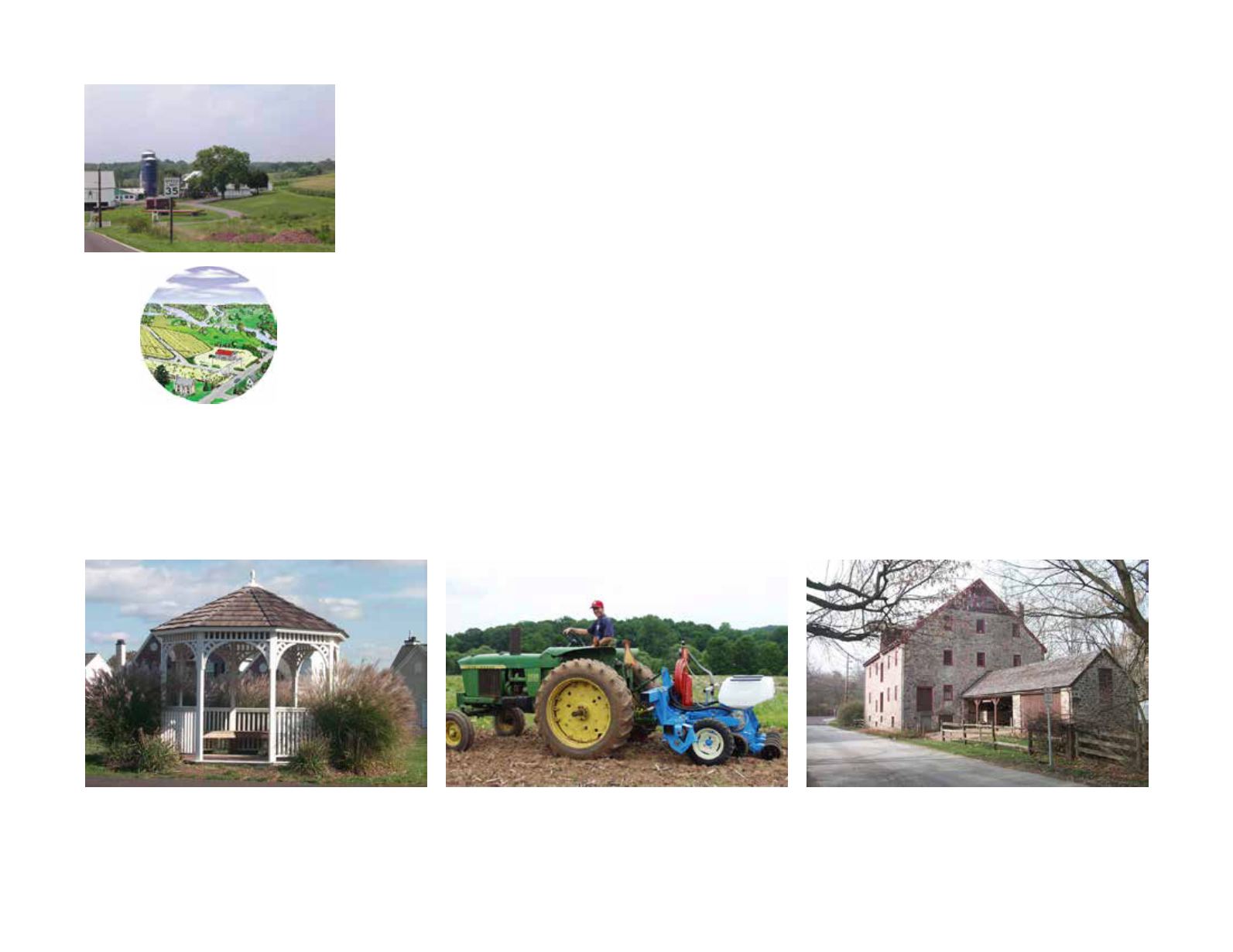
2040 VISION
88
Rural Resource Area
– Rural Resource Areas consist of open land with a traditional rural appearance that includes farms,
small woodlands, some low density residential homes, and rural villages.
The primary uses in these areas might include:
Farmland and other undeveloped land.
Scattered single-family detached homes
Low density residential development that is clustered or has a rural character
Low intensity institutional uses
Rural villages
Secondary uses might include existing rural industrial enterprises.
Rural Resource Areas should be as open and undeveloped as possible, with little, if any new development. Historic buildings
and structures should be preserved or reused, including homes, barns, outbuildings, fences, walls, and bridges.
New development should fit in with the overall rural character, and homes should be hidden from view, either through
topography or landscaping. Farmfields, trees, steep slopes, wetlands, and other environmentally sensitive land should be
preserved, potentially as open space within a cluster development. New buildings in rural villages should meet the design
guidelines for Village Centers.
When residential development occurs, it should be
clustered with significant open space.
Farming is the most important use in Rural Resource
Areas.
Historic landmarks, like mills, barns, fences, and bridges,
should be preserved.


